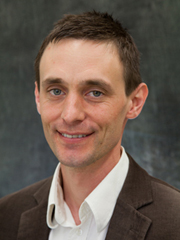Probing the Morphology of Bulk Heterojunction Films
Probing the Morphology of Bulk Heterojunction Films
UCSD NanoEngineering Seminar
Wednesday, October 7th, 2015
Presentation time: 11am to noon
Cymer Conference Center (Structural Materials Engineering, Room 248)
Dr. Adam Moule
UC Davis
Abstract: Organic photovoltaic devices now exist with power conversion efficiency of over 10%. These highly efficient devices have near unity internal quantum efficiency, but nevertheless a highly disordered internal structure. The growing understanding that are gaining of polymer/fullerene morphology has pushed the efficiency increase from 1% to above 10%. Until recently, however, it was not possible to resolve the morphology of polymer/fullerene blends because there is little contrast between conjugated organic materials. In the IR, visible, UV, donors and acceptors often show similar behavior. X-ray spectra are only sensitive to crystalline domains, so amorphous portions of the film are not resolved.
Our group recently developed the use of high angle annular dark field (HAADF) scanning transmission electron tomography (STET) in combination with discrete area reconstruction technique (DART) for the measurement of polymer fullerene morphology. The resulting images can resolve multiple gray levels and have a voxel size of 1.4x1.4x1.4 nm, which makes them by far the most highly resolved and chemically detailed images of bulk heterojunction (BHJ) layers ever published. We apply this technique along with energy filtered STEM to the study of morphology in OPV device layers. These measurements are compared against reflectometry techniques and thin sectioned layers to verify that vertical information is accurately reconstructed in the 3D images.
Biosketch:
Associate Prof UCD 2014
Assist Prof UCD 2007-2014
Alexander von Humboldt Postdoctoral Scholar at University of Cologne 2004-2006
UC Berkeley PhD in Physical Chemistry 2003
U. Oregon BS 1998


